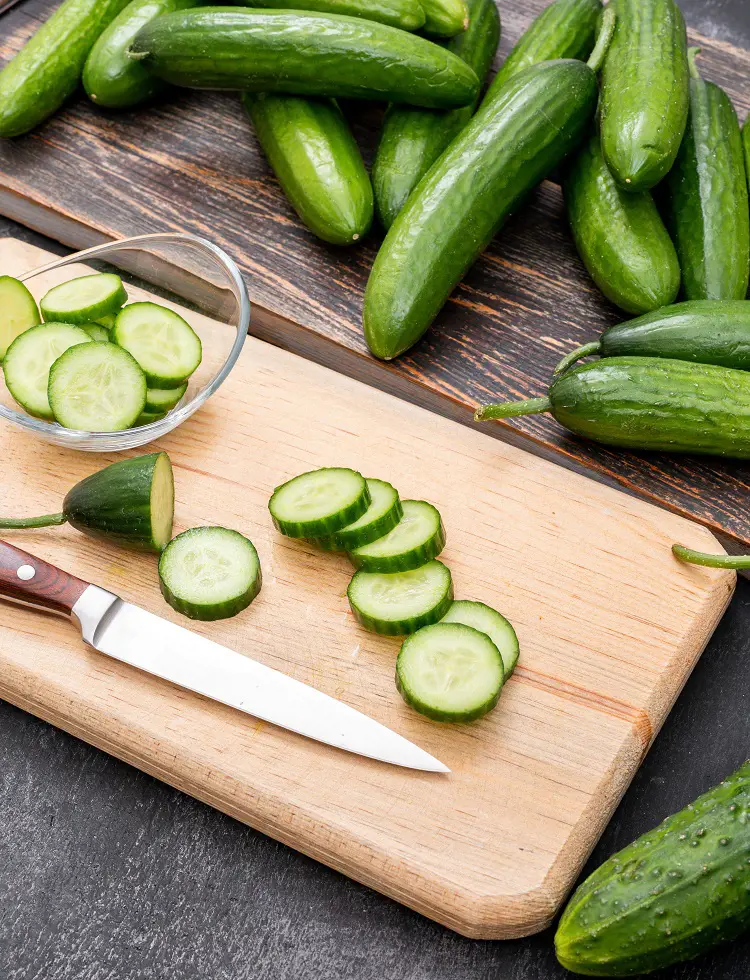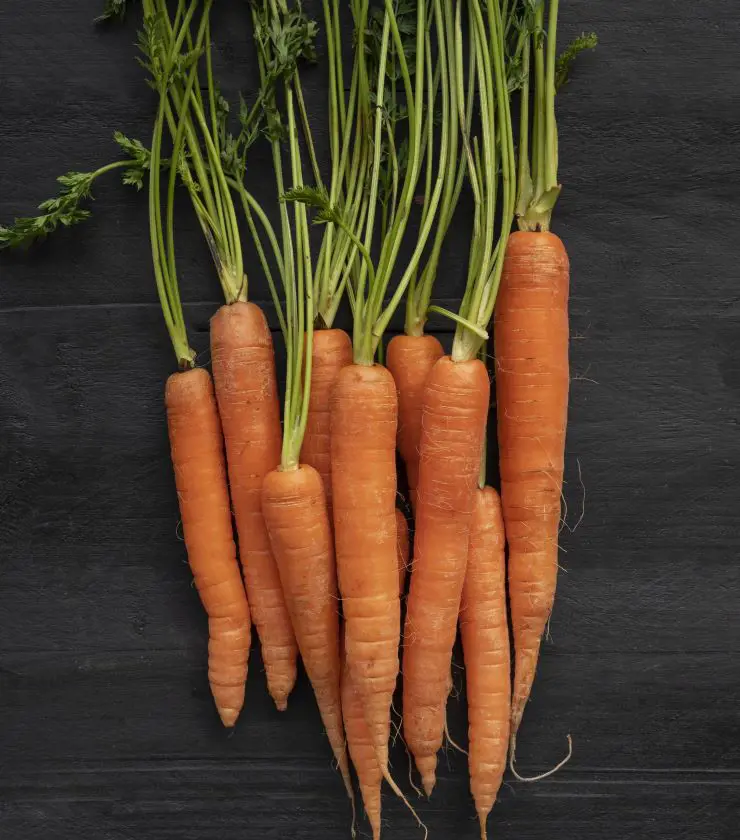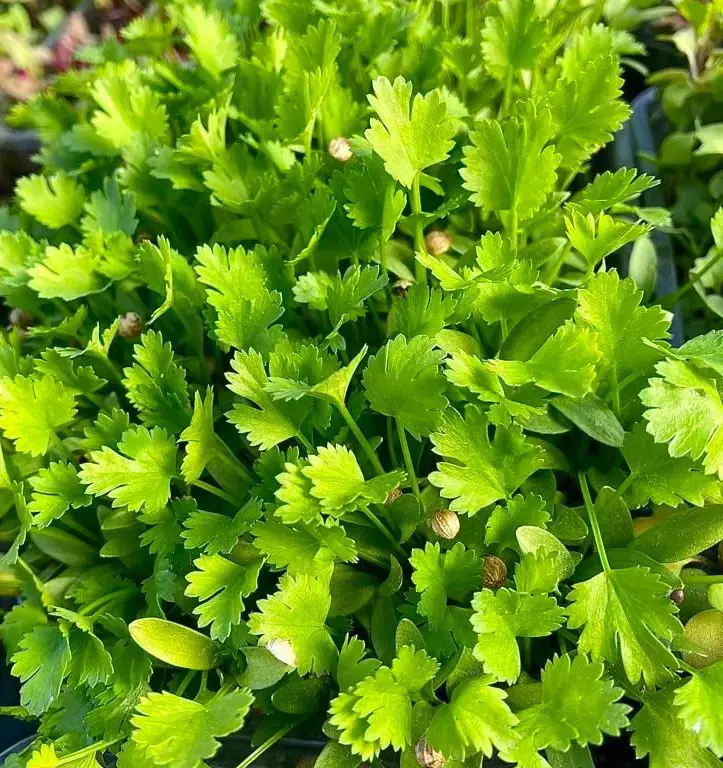How To Store Tomatoes
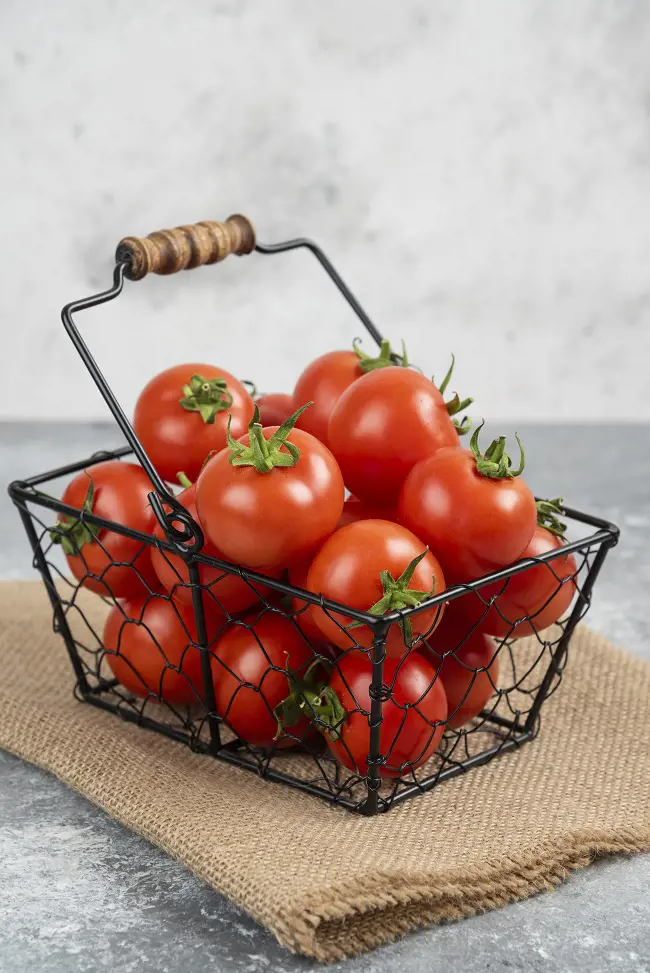
This post may contain affiliate links. If you make a purchase through links on our site, we may earn a commission.
Are you tired that your delicious tomatoes are going bad due to unmanaged storage problems? Or maybe you're looking for a more efficient way of preserving their freshness that is easy and practical.
In this article, we have listed 12 easy tips to keep them fresh, and by the end of it, you'll be able to choose the feasible way for you to store your tomatoes for as long as you need.
1. Keep Tomatoes In Room Temperature
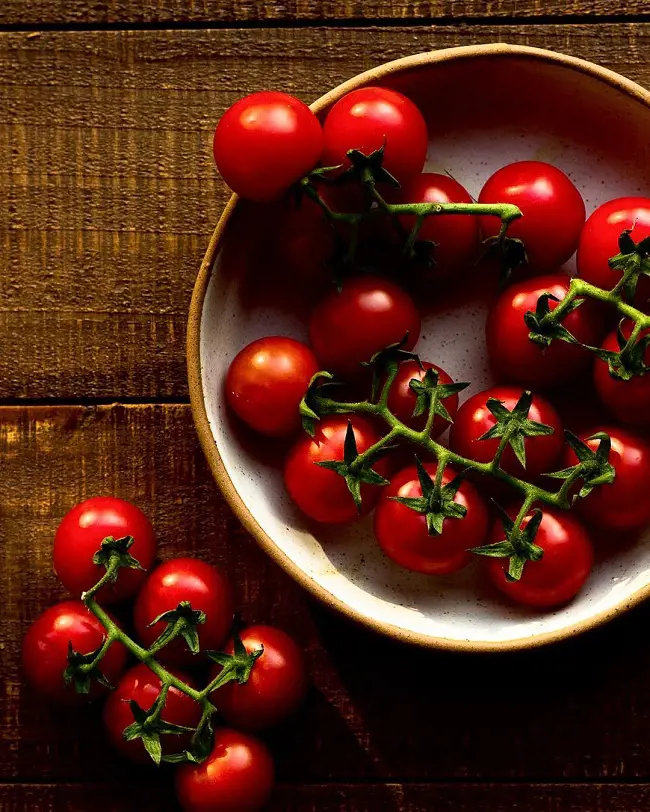
One of the easiest and simplest ways of storing tomatoes with the use of a refrigerator is to keep them at room temperature. To follow this method you need to use a storage container that promotes an ample amount of air circulation, such as a cardboard tray or wire basket along with a paper towel to absorb the unwanted moisture.
Also avoid using a plastic bag to store your tomatoes, or sealed containers, because they won't be able to remove moisture and cause premature spoilage. Make sure there is enough space for air to extend the shelf life. Moreover, if you want to keep tomatoes a room temperature then you must pick a variety of tomatoes that are ideal for room temperature such as a long-keeper winter storage tomato.
2. Separate Them From Other Fruits
If you are making the mistake of keeping all the fruits and vegetables together, then you are making a blunder mistake. Storing food the right way can make all the difference in their shelf life. When any fruits and vegetables are ripening they release a natural gas named Ethylene. This will not only ripen one fruit but will also hamper the neighbor fruit.
Therefore, some fruits and vegetables should be stored separately if you want to preserve them for a longer period. A good rule is to separate the fruits that can produce high ethylene gas from those that cannot. Some high offenders fruits are bananas, tomatoes, onions, apples, and avocados. So, always keep this thing in mind if you are planning to store tomatoes for an extended period.
3. Store Tomatoes In The Pantry
Another amazing method of storing your tomatoes is to keep them in a pantry if they have yet to ripen fully. Though it is believed that tomatoes should ripen on the plant, sometimes outside forces can require you to pluck them a little early. The best way to store tomatoes in the pantry is to put them somewhere cool where there is no reach of sunlight.
But start this process by assessing the risk to your tomatoes, as sometimes they may go to waste and you cannot get the result you want. First, be sure that tomatoes can stay for a longer time in the pantry as they are too far away from being ripe. Then you are good to keep this spring vegetable (tomatoes) outside the refrigerator and consume it for a longer time without losing the benefits.
4. Refrigerate Ripe Tomatoes
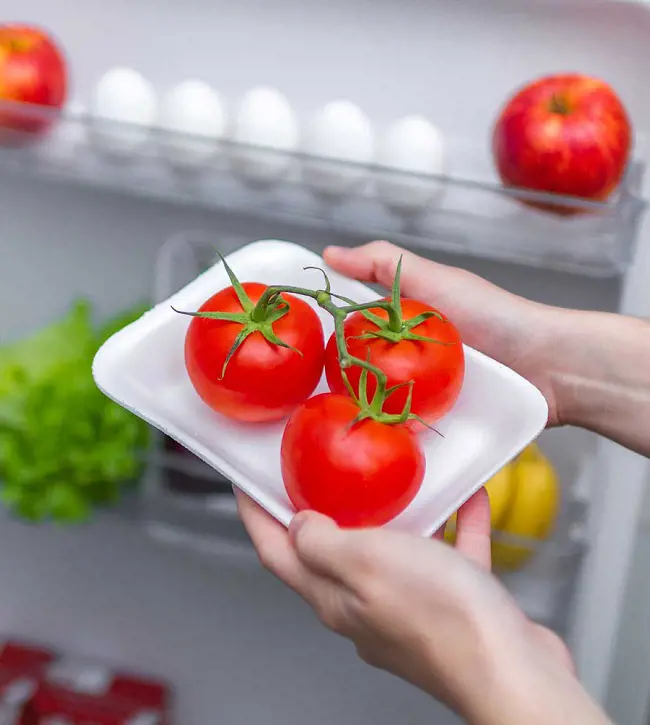
There is always an argument between people about keeping tomatoes in the refrigerator or at room temperature. There may be good reasons for keeping tomatoes outside, but you have to consider all factors before making a decision. Once your tomatoes are ripe, you don't want them to go to waste unless you intend to use them quickly.
While it is true that the flavor and quality of your tomatoes will hold up better at room temperature. But keeping the already ripe tomatoes in the fridge increases their shelf life and you can use them for more than a week, this way you don't have to buy more groceries and don't need to worry about throwing them away. And if you are worried about poor flavor and quality, just let your tomatoes sit at room temperature for a few minutes and you will get the natural taste back.
5. Check Your Tomato Regularly
Make sure you check your stored tomatoes regularly be they refrigerated tomatoes or room-temperature ones. Due to climate change or temperature problems, they may show signs of ripening or spoiling. If that is the situation, then remove any overripe tomatoes and put them in the freezer away from the fresh tomatoes.
Preserving the natural freshness of tomatoes for a long period requires a combination of proper handling techniques and storage conditions. Whether you choose to keep them at room temperature or opt for freezing, the important aspect is to minimize the exposure to moisture, temperature, and ethylene. By doing so, you would be able to enjoy the freshness of tomatoes and use them to make certain dishes for an extended period.
6. Store Tomato Stem-Side Down
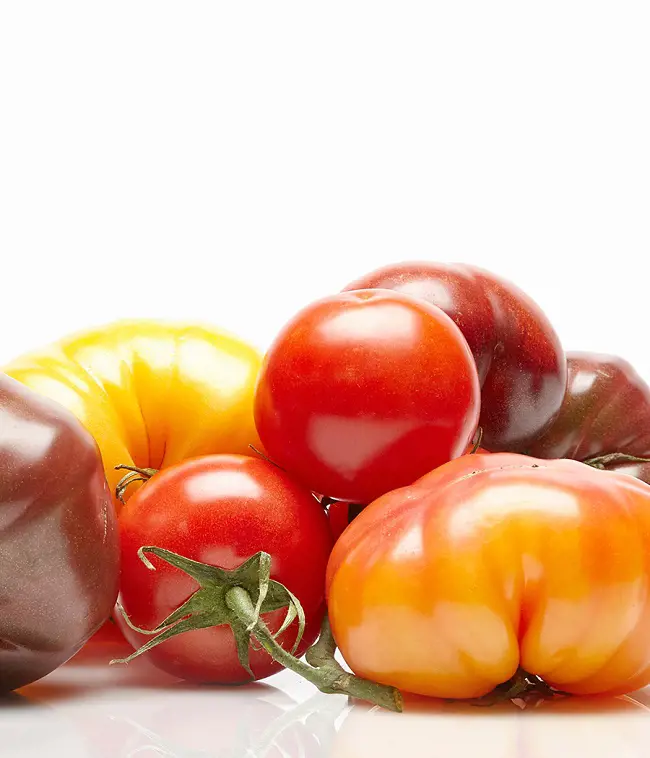
For extra juicy tomatoes, place tomatoes on your counter stem side down. This way of storing tomatoes in your pantry will block moisture from leaving the tomato and prevent bacteria from entering it. Moreover, the bottom of the tomato ripens first which allows the fruit to sit heavy on the ripest area without making it mushy.
Additionally, keeping a small container with baking soda near your tomatoes can help absorb ethylene gas. Ethylene gas is produced by tomatoes as they ripen and can potentially accelerate the tomatoes' shelf life. If you are not so sure about keeping the tomato stem side down then you can tape over the stem to lock all the moisture, this is also as effective as stem-side down.
7. Freeze Whole Tomatoes
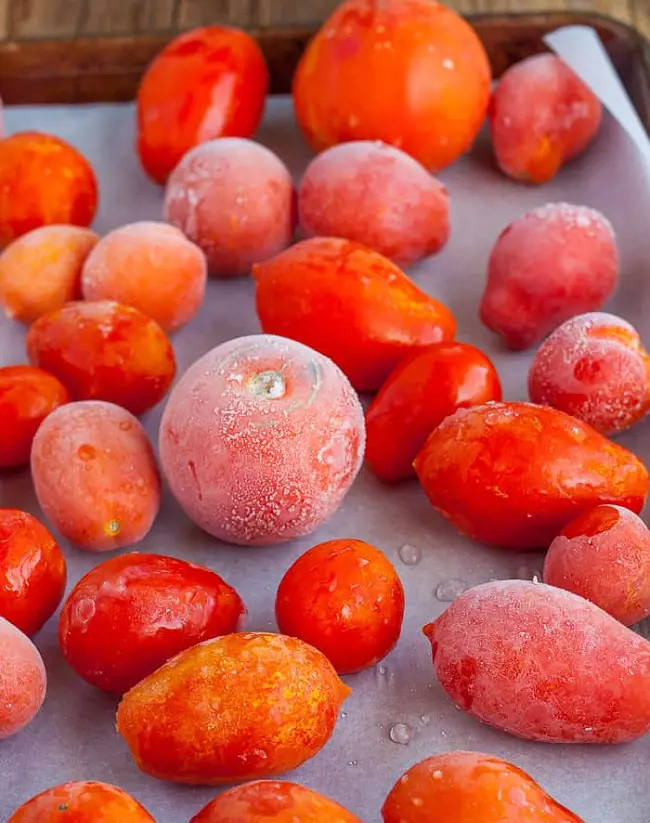
While refrigerating or keeping them at room temperature is a better idea, the freezer is something of a last resort in terms of storing your tomatoes in the best way. You would want to avoid freezing your tomatoes unless you've truly come down to zero shelf life. However, as compared to rotten tomatoes, it is still better to have them stored in the freezer.
You may not be able to use them for toppings or salads but can still work best to make tomato dishes that require cooking. Freezing your tomatoes is best if you're planning to make sauce, soup, or other recipes that require cooking the tomatoes. So, instead of throwing away those unwanted tomatoes, you can try to freeze them for future use.
8. Try Canning And Preserving Method
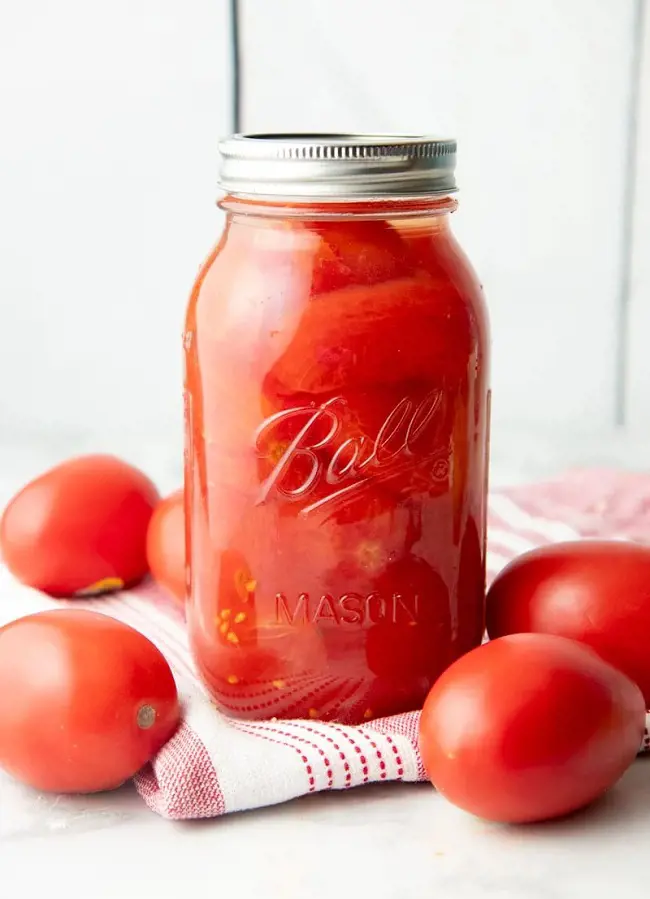
If you want to have your tomatoes for a whole year round then try adding preservation and canning methods. Tomatoes are easy to scan for long-term storage with very simple steps:
- First of all wash and blanch the tomatoes under fresh water and when the tomatoes start to lift take it out and leave them to cool.
- Peel the tomato skin, remove the seeds as well as excess juice, and smash the skin and seeds with a spatula.
- Now, squish the tomato pulp with your finger and crush the rest of the tomato into large pieces over a pan.
- After that, cook the tomatoes and tomato water, at the same time sterilize the canning jars, pour the tomatoes into the jars, and put the lids on the jars.
- Place the sealed jars in a cool, dark area and use it whenever you want to use the tomato puree.
9. Drying Tomatoes
Another healthy way to preserve tomatoes is by drying them. Here are some simple ways to prepare dried tomatoes:
- Wash the tomatoes thoroughly and slice them in half using the knife.
- Remove the seeds and the steam of the tomatoes, you can also peel off the skin if you like.
- Lay the tomatoes cut-side up on a dehydrator tray, but if you place the tomatoes cut-side down, they may stick to the tray.
- Now, dehydrate the tomatoes at 57 degrees celsius and turn the tomatoes only after 3-4 hours.
- Remove the tomatoes if they start to dry to a leather-like texture and continue checking on the tomatoes every hour or so for up to 24 hours.
- You can keep the dried tomatoes in oil or freeze them for up to a year according to your taste and preference.
10. Make Tomato Powder
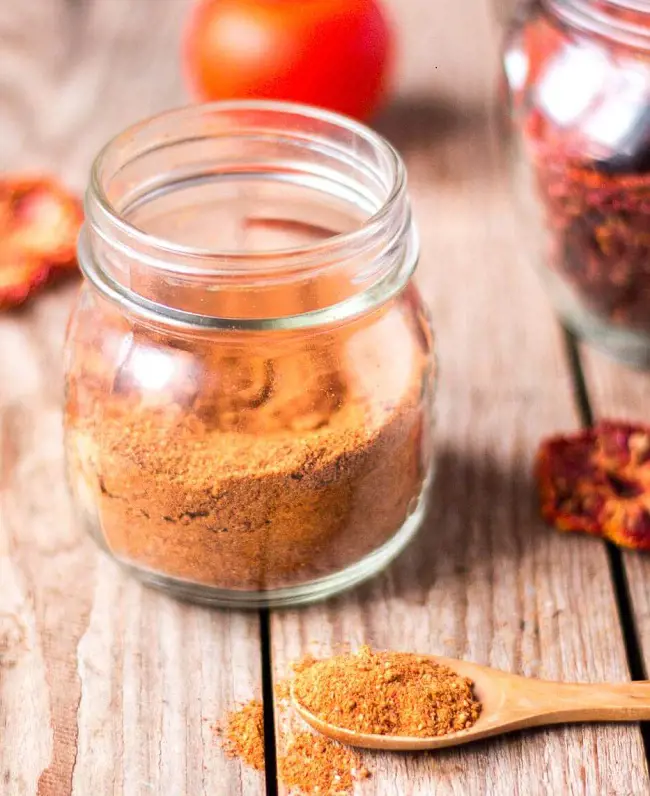
While making dried tomato and canned tomato, if you happen to peel the skins, then be sure to set them aside. This is because you can reduce making waste out of tomatoes and actually turns skins into tomato powder that can be incorporated into various cooking style.
Tomato powder in a simple term is a dried tomato that has been finely ground into a seasoning powder. This powder form of tomatoes can be used to blend spices or dry rubs, or can also be used to flavor soup, stew, rice, and other dishes. Everything is similar to the drying process, after the tomatoes are properly dehydrated you just need to grind the final product and keep it safely in a glass jar.
11. Root Cellar Storage
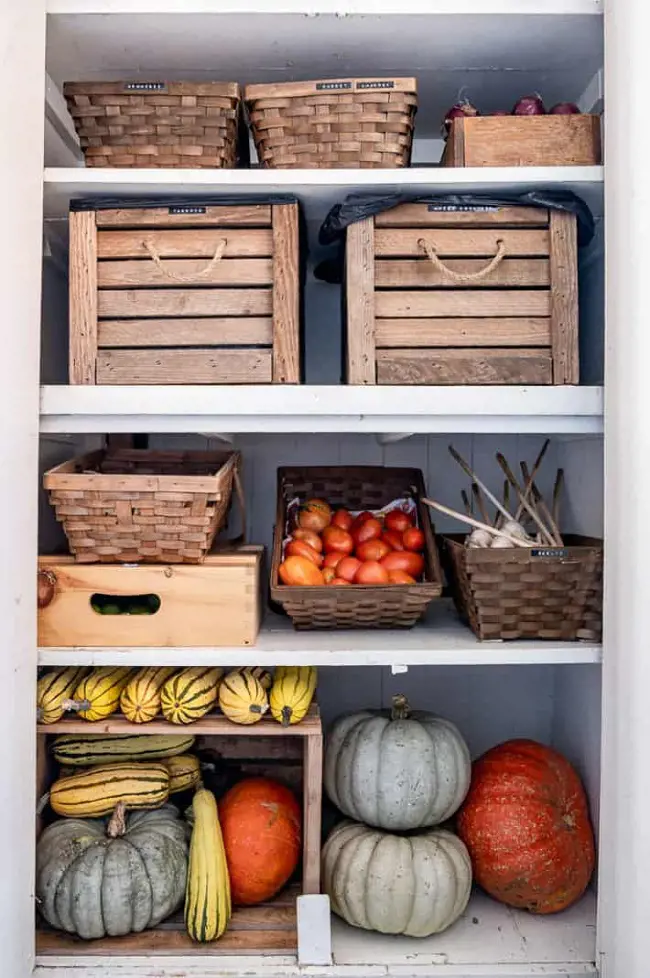
A root cellar storage method is often found in older homes or rural properties. It is an excellent way to naturally preserve tomatoes without the use of a refrigerator. If you are fortunate enough to have access to one, it can serve as your instant tomato preservation method.
Make sure that your root cellar has controlled temperature and humidity levels that are suitable for preserving tomatoes. Place tomatoes in single layers on wooden shelves or in cardboard boxes and ensure that they don't touch one another. Make a good layering and protective barrier to prevent bruising. Following this method is easier which will maintain the freshness and quality of the tomatoes.
12. Store Cut Tomatoes
If you are wondering about keeping your half-cut tomatoes, then you will be glad to know that it is possible to store cut tomatoes. If you live in a moderate climate where it's not too hot or cold then try storing them by wrapping them up with plastic, which prevents the air from reaching the vegetable.
But if you want to keep it in the refrigerator, then place the half-cut tomatoes on a shelf with a paper towel. Make sure the exposed side touches the paper. But if the tomatoes are diced in small pieces then put them in a bowl and sprinkle a bit of salt on top. When you want to reuse the tomatoes again, take them out from the fridge and allow them to adapt to room temperature.
Recent posts
How To Store
How To Store
How To Store Cucumbers
A good cucumber is cool, crunchy, and refreshing, but if you don't store it right, it can turn mushy and not good to eat. To keep cucumbers fresh, store them where they can get air and not too wet. Now, let's talk about different ways to keep cucumbe...
How To Store
How To Store Garlic Properly
Garlic is a kitchen pioneer important for adding flavor and depth to countless dishes. However, if stored incorrectly, garlic may lose its potency or even go bad. When stored properly a fresh garlic bulb can last up to six months otherwise, it will o...
How To Store
How To Store Potatoes - 15 Simple Tricks
Potatoes are a versatile vegetable loved for ages. From French fries to baked potatoes, there are many ways to enjoy them and they also naturally have a long shelf life. However, it is concerning that they can't last long without proper precautions. ...
How To Store
How To Store Carrots So They Last Longer
Carrots typically last for days and weeks at room temperature. If stored properly using the right technique, it can last for several months too. From harvesting to freezing, several ways can help extend the carrots’ shelf life. In this gu...
How To Store
How To Store Avocados Long Term
Avocado is a delicious, yet highly perishable fruit with nutritive benefits. Its high metabolic rate is the major contributing factor to its shorter shelf-life. The shelf-life of avocados ranges from 3-4 weeks when stored at the ideal temperature and...
How To Store
How To Store Cilantro Leaves
Cilantro is an indispensable item in our kitchen. Cilantro's seeds, leaves, and stems can all be consumed and can be used in many dishes around the world including sauces, soups, curries, etc. Cilantro is a good option because of its pleasant scent, ...
